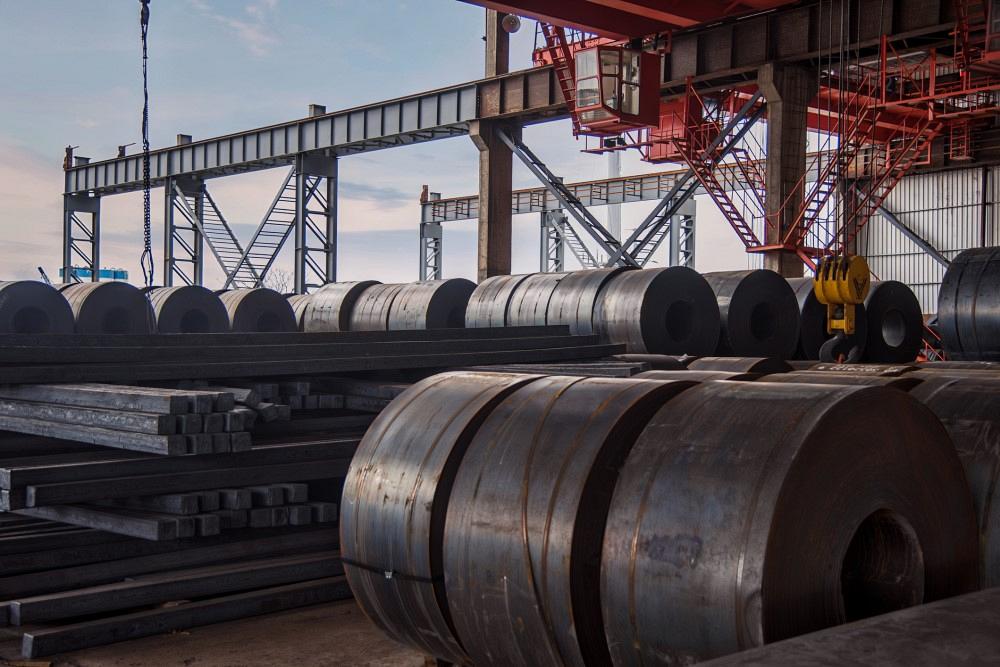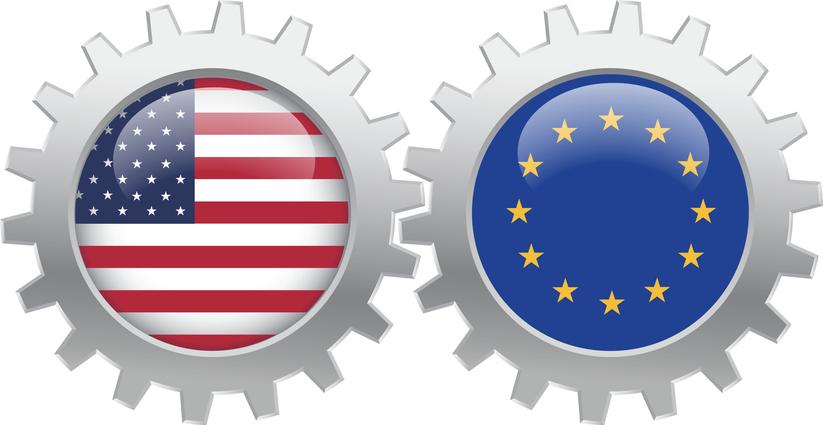Contributing Writer
- FMA
- The Fabricator
- FABTECH
- Canadian Metalworking
Categories
- Additive Manufacturing
- Aluminum Welding
- Arc Welding
- Assembly and Joining
- Automation and Robotics
- Bending and Forming
- Consumables
- Cutting and Weld Prep
- Electric Vehicles
- En Español
- Finishing
- Hydroforming
- Laser Cutting
- Laser Welding
- Machining
- Manufacturing Software
- Materials Handling
- Metals/Materials
- Oxyfuel Cutting
- Plasma Cutting
- Power Tools
- Punching and Other Holemaking
- Roll Forming
- Safety
- Sawing
- Shearing
- Shop Management
- Testing and Measuring
- Tube and Pipe Fabrication
- Tube and Pipe Production
- Waterjet Cutting
Industry Directory
Webcasts
Podcasts
FAB 40
Advertise
Subscribe
Account Login
Search
Biden extends EU metals tariff deal
Parties continue to work on carbon emissions plan that would replace the current TRQ agreement
- By Stephen Barlas
- UPDATED January 5, 2024
- January 5, 2024

Before the close of 2023, President Joe Biden extended the tariff rate quota agreement on steel and aluminum with the European Union to Dec. 31, 2025. This will give the two parties time to work out a deal that would take into account the level of carbon emissions tied to any imported item zssp / iStock / Getty Images Plus
President Joe Biden announced at the end of 2023 that he was extending the tariff rate quota (TRQ) agreement on steel and aluminum with the European Union (EU) to Dec. 31, 2025. The agreement, which was to have expired at the end of December, allowed EU steel and aluminum exporters to avoid the 25% and 10% tariffs on steel and aluminum imposed in 2018 as long as the exports were below certain levels.
Meanwhile, both countries are moving to replace the current tariffs with a system where tariffs or fees would be placed based on the level of carbon emissions attached to the production of a particular import, probably if those import emissions compare unfavorably with U.S. emissions for the same product. That kind of a system might help U.S. steel manufacturers whose carbon emissions are lower than many foreign producers, particularly those in China. However, some of those bills would also penalize U.S. producers for high emissions by charging fees, which would invariably raise prices for U.S. manufacturers who buy steel made in the U.S.
Not all EU steel and aluminum exports have escaped tariffs under the current TRQ program, though most have. In 2022, the EU exported 3.8 million metric tons of steel to the U.S. Of that, 1.7 million metric tons of EU exports benefitted from the duty-free treatment under the TRQs. In addition, the U.S. granted 1.5 million metric tons of further exclusions to EU exporters. (A metric ton is equal to 2,204 lbs.)
With regard to aluminum, the EU exported 289,000 metric tons of aluminum to the U.S. in 2022. However, only 146,000 metric tons of EU exports benefitted from the duty-free treatment under the TRQs. In addition, the U.S. administration granted 70,000 metric tons of exclusions to EU exporters.
The TRQ agreement is supposed to be a stop gap measure until the U.S. and EU can finalize a broader agreement addressing overcapacity and decarbonization of steel. The EU launched its Carbon Border Adjustment Mechanism (CBAM) on Oct. 1, the first phase of the world’s first system to impose CO2 emission tariffs on imported steel, cement, and other goods. But fees will not be collected until 2026.
The U.S. Congress is considering two different pieces of legislation that not only would impose the same kind of tariff system but also penalize U.S. companies who sell domestically. The Clean Competition Act sponsored by Sen. Sheldon Whitehouse, D-R.I., would establish carbon border fees on some imported goods with higher greenhouse gas (GHG) emissions intensity than the emissions intensity of competing U.S.-made goods. Starting in 2025, domestic manufacturers in the steel and aluminum and other energy-intensive industries also would pay a tax if their carbon intensity is above the applicable industry carbon intensity baseline. The tax would be figured only on the fraction of emissions that exceeds the industry baseline.
Kevin Dempsey, president and CEO of the American Iron and Steel Institute, said his group supports import penalties based on carbon emissions. But he added, “AISI strongly opposes the Clean Competition Act’s proposed tax on domestic carbon emissions. This provision penalizes domestic producers who are making great strides towards decarbonization and would deprive domestic steel producers of the very capital needed to continue investing billions of dollars in decarbonization and innovation in the United States.”
Sen. Bill Cassidy, R-La., introduced in November the Foreign Pollution Fee Act, which also includes a border adjustment mechanism. The new bill would impose a fee on certain products imported into the U.S. that are “dirtier” than their U.S.-produced counterparts. The fee—to be calculated by the national laboratories—would increase as the difference in pollution widens between a foreign country and the U.S.
At this point, it doesn’t appear that any congressional legislation will impose a tax on domestic auto, appliance, or any other steel-consuming manufacturer based on its GHGs. (Currently, these manufacturers must report these emissions to the Environmental Protection Agency.) But to the extent steel and aluminum producers in this country might have to pay for excessive GHG emissions based on potential legislation, manufacturers might be wise to expect those types of increases to be passed down to them.
Nor is it clear how replacement of the 25% tariff on imported steel and the 10% tariff on imported aluminum with a GHG emissions tariff on steel and aluminum imports would impact U.S. buyers. Domestic manufacturers will have to wait to see how that affects metals pricing.
subscribe now

The Fabricator is North America's leading magazine for the metal forming and fabricating industry. The magazine delivers the news, technical articles, and case histories that enable fabricators to do their jobs more efficiently. The Fabricator has served the industry since 1970.
start your free subscriptionAbout the Author

Stephen Barlas
- Stay connected from anywhere

Easily access valuable industry resources now with full access to the digital edition of The Fabricator.

Easily access valuable industry resources now with full access to the digital edition of The Welder.

Easily access valuable industry resources now with full access to the digital edition of The Tube and Pipe Journal.
- Podcasting
- Podcast:
- The Fabricator Podcast
- Published:
- 04/30/2024
- Running Time:
- 53:00
Seth Feldman of Iowa-based Wertzbaugher Services joins The Fabricator Podcast to offer his take as a Gen Zer...
- Industry Events
Pipe and Tube Conference
- May 21 - 22, 2024
- Omaha, NE
World-Class Roll Forming Workshop
- June 5 - 6, 2024
- Louisville, KY
Advanced Laser Application Workshop
- June 25 - 27, 2024
- Novi, MI
Precision Press Brake Certificate Course
- July 31 - August 1, 2024
- Elgin,
































